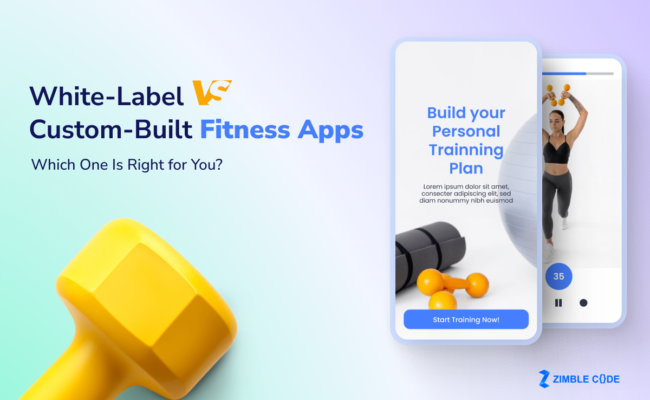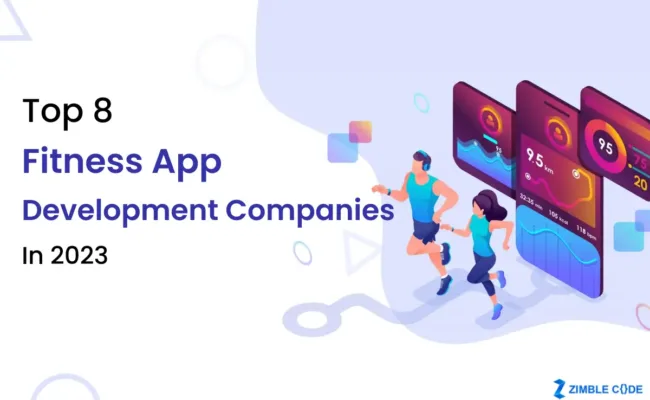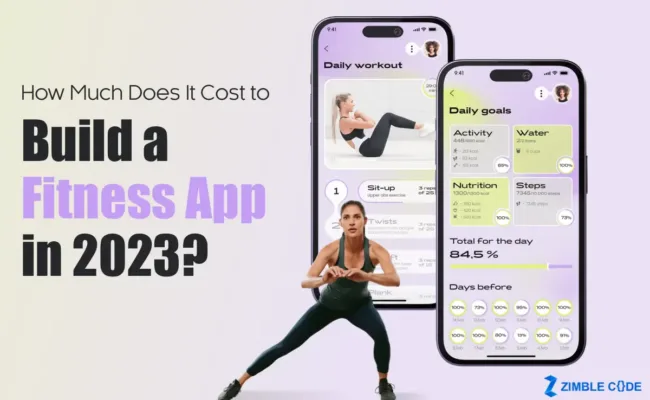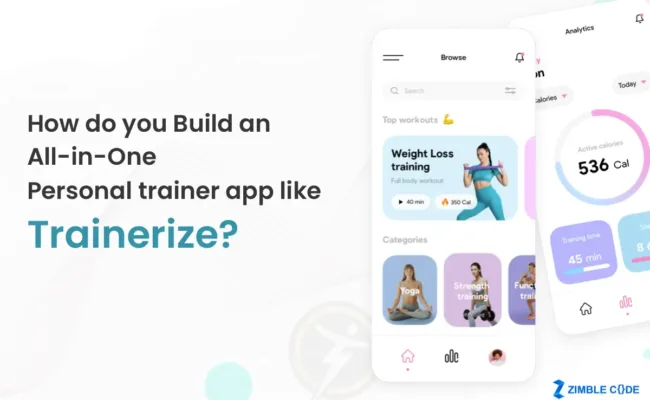Did you know?
In the United States, a noteworthy 64% of people prioritize wellness and fitness over other leisure activities. In fact, Mindbody’s 2023 Wellness Index states that 87% of individuals reported either maintaining or increasing their well-being spending in 2022.
But where are all these expenditures going on?
The answer is Health and Fitness Apps!
As the demand for fitness apps continues to expand, an increasing number of businesses are turning to technology-infused fitness app development to achieve their user’s health goals.
In the journey of such infused technology, a remarkable metamorphosis occurs. Several trends are coming up fueled by cutting-edge advancements in technology. Above all, the most significant point is that these trends are not minor tweaks. Instead, they are capturing a complete overhaul of the health and fitness market.
The story begins with tailored AI guidance and moves towards captivating VR exercise routines, whereby the evolution of fitness app development is set to transform everyone’s perspective on wellness.
As per Allied Market Research, the global fitness app market is poised to reach US $120.37 billion by 2030. So, brace yourself for an expedition that transcends the ordinary by introducing innovative and inspirational trends into each workout session.
Top Health and Fitness App Development Trends in 2024

-
Gamification for Motivation:
World Health Organization states a concern that over 28% of adults are physically inactive. With respect to it, fitness apps are ingeniously introducing gamified features. These apps incorporate game-like elements such as points, achievements, and leaderboards, which elevate fitness activities into enjoyable experiences.
-
Home Fitness:
Imagine your living space into a fully equipped fitness haven. You can have built-in cameras, touch-screen displays, online classes, personal trainers, and motion sensors seamlessly controlled through your fitness app. Further, these home fitness solutions incorporate the Internet of Things (IoT) to make them time-efficient. Thus, such kind of apps is meant for those individuals who desire effective workouts within the convenience of their homes.
-
Workplace Wellness Apps:
There are numerous companies that place a premium on the well-being of their employees. As a result, they seamlessly incorporate comprehensive wellness initiatives using advanced technologies. The workplace wellness apps allow such employees to engage in fitness challenges, access health assessments, and receive nutrition counseling. Additionally, these apps play a crucial role in monitoring their vital health metrics, possibly enhancing their productivity levels.
-
Wearable Technology Integration:
Now, wearable technology integration devices are seamlessly incorporated into health and fitness apps. Such devices are meant to provide real-time information about physical activity, heart rate, and sleep patterns. These features facilitate comprehensive monitoring and offer valuable data for diagnosing and treating a range of health conditions. In such a trend, predictions suggest that the market for wearable health devices will achieve a value of $265.4 billion by 2026.
-
Cloud-Based Solutions:
Modern health and fitness technology used by the best fitness app development company in Melbourne, Australia, relies on cloud-based systems. This indicates that such apps target to provide a centralized hub for efficient oversight of gym operations. Furthermore, these cloud-based products enable continuous innovation without causing downtime and enhance security by storing sensitive health information on secure servers.
-
Mental Health Prioritization:
This trend is coming up as wellness applications are trying to address the rising challenges associated with mental health. These apps are designed to guide users through meditation and mindfulness activities. With a noteworthy daily user base exceeding 3 million on meditation apps, these technologies offer structured support, effectively tackling various mental health concerns.
-
Virtual And Augmented Reality:
Fitness apps also integrate virtual and augmented reality features to enhance the enjoyment of exercise and overcome time constraints. Users can now craft personalized workout environments at home. This eliminates barriers and makes prioritizing their health and overall well-being easier.
-
AI Personal Trainers:
AI-powered personal trainers use advanced algorithms and machine learning to tailor workout experiences. These tools automatically adjust as the users’ strength and fitness levels improve. Moreover, these apps are designed to evolve and replicate the guidance provided by physical trainers in the virtual fitness realm.
-
Customer Personalization:
These days, fitness app developers focus more on personalization while developing health and fitness apps. It allows users to customize workout and meal plans according to their preferences. In fact, the developers utilize advanced technologies such as wearables and biometric sensors to offer more precise data. Therefore, this trend significantly elevates the overall personalized nature of fitness solutions.
-
Data Analytics:
The growing significance of data analytics in developing fitness apps empowers trainers and gym owners to decipher user behavior patterns. Additionally, this enables them to fine-tune programs to meet evolving needs, ensuring a dynamic and responsive fitness experience.
-
Telemedicine Integration:
Health and fitness apps are aligning with the increasing prevalence of telemedicine. These apps provide users with the option for virtual consultations with healthcare professionals and personal trainers. Not only this but this integration also signifies a promising future where individuals can access more comprehensive and integrated health solutions.
-
Integrated Nutrition Lists:
Going beyond traditional fitness tracking, integrated nutrition lists offer users a tool that combines nutritional guidance with practical grocery planning. This underlines the industry’s commitment to delivering comprehensive and user-centric solutions, addressing both fitness and nutritional aspects within a single consolidated platform.
Wrapping Up!
The upcoming trends in fitness app development for 2024 and beyond will emphasize personalized experiences and health data integration more. Thereby, this will target turning fitness from a regular habit into a meaningful behavior with an immersive journey. Are you also looking to create your own app? If the answer is yes, connect with an experienced on-demand health and fitness app development company like ZimbleCode. The team can help you build an app compatible with various platforms and thrive in this competitive industry.
Frequently Asked Questions (FAQs)
Q1. How can I generate revenue from my fitness app?
You can integrate various monetization avenues, such as subscription plans, in-app purchases, collaborations with fitness professionals or brands, and incorporating advertisements into your fitness apps.
Q2. How much does a fitness app development cost?
Developing an essential fitness app costs about $40,000, while more advanced versions featuring functionalities may range between $100,000 and $500,000 or even more.
Q3. How can you guarantee user privacy and data security in the fitness app?
You can incorporate strong encryption protocols, ensure secure data with storage practices, and articulate your privacy policy to users through permission settings to guarantee user privacy and security.








Leave A Comment